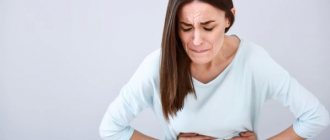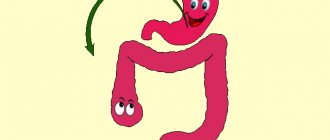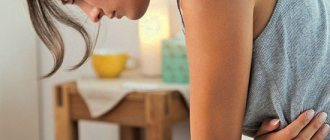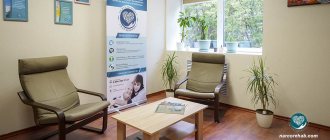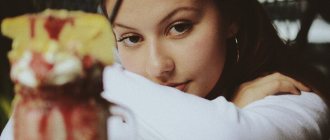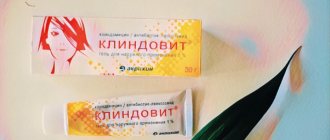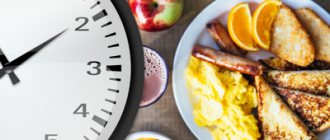Almost everyone perceives chest pain as a potential heart problem. However, there can be many reasons for discomfort. In any case, it is impossible to determine on your own what causes the discomfort. Only a qualified doctor can determine the cause.
Incorrect diagnosis, lack of treatment, and uncontrolled attempts to relieve pain at the site of discomfort often lead to the development of severe pathologies.
To make sure that pain is not a sign of serious illness or to select treatment for identified pathology, it is better to visit a doctor. The causes of pain can be caused by diseases of the heart, lungs, gastrointestinal tract and neurological problems. If you don’t know which doctor to make an appointment with first, come to the Kutuzov Diagnostic and Treatment Center. We have all the specialists who can help you make an accurate diagnosis. Start by making an appointment with your GP and follow their instructions.
Such different chest pains
Thoracalgia is a term for chest pain (from the words “thorax” - chest and “algia” - pain).
It can hurt either on one side of the chest or in the middle, in the upper or lower part. The nature of the pain is:
- Sharp and burning.
- Dull and aching.
- Stabbing.
- Compressive.
Among the main reasons for the appearance of a disturbing symptom in the chest are diseases, injuries and pathologies:
- Heart and blood vessels.
- Lungs.
- Musculoskeletal system - muscles, ribs and spine.
- Nervous system
- Gastrointestinal tract.
Let's look at them in more detail.
Heart problems
Pain in the chest in the middle or on the left side occurs with various heart diseases:
- IHD, angina pectoris - a violation of blood flow in the heart arteries. Often an attack of sharp pain lasts up to 15 minutes. Occurs during physical activity, stress, anxiety, and goes away after rest.
- Myocardial infarction is the death of cells and the formation of scars on the heart muscle. It is characterized by severe pain in the chest on the left and in the middle, which does not go away after 15-20 minutes. Additional symptoms include weakness and fear of death.
- Pericarditis or myocarditis is an inflammatory process in the muscle or lining of the heart. They are characterized by acute or aching pain in the chest when inhaling in the middle of the chest, which intensifies while eating or lying down.
- Mitral valve prolapse - in addition to chest pain, it causes shortness of breath, dizziness, even fainting.
- Pulmonary hypertension is increased pressure in the pulmonary arteries, an attack similar to a heart attack.
A characteristic feature of heart pain is that it often occurs against a background of emotional or physical stress and is accompanied by a feeling of panic and fear of death.
Causes of burning in the chest
Pain and burning in the chest are fairly common symptoms that can occur after heavy physical activity, after eating, or during stressful situations. This phenomenon can indicate both fairly harmless processes and pathological conditions that pose a threat to human life. In addition to the heart, the chest cavity contains the lungs, stomach, esophagus, pancreas, large vessels, musculoskeletal system, and on top in women - the mammary glands.
The cause of a burning sensation in the chest, if it is not episodic, but regular or constant, must be clarified by a specialist to determine the correct treatment methods.
Why do chest pains occur?
Unpleasant sensations and burning sensations in the chest in men and women can be caused by a number of diseases. Let's look at the most common ones.
Diseases of the gastrointestinal tract
One of the most “popular” causes of burning in the chest is heartburn. It usually appears after an excessively large meal, as well as from spicy, smoked, overcooked foods (especially at night). Heartburn can also occur after drinking alcohol, strong coffee and tea. Burning and pain behind the sternum can appear along the entire line of the esophagus and spread from the throat to the stomach. The duration of the pain syndrome most often ranges from 5-10 minutes to an hour and a half or longer, often accompanied by belching with a sour taste. A slight dry cough and a feeling as if the person has choked on something may also occur. About half an hour after eating, a symptom such as a sore throat is likely to appear, which intensifies when a person bends over or assumes a horizontal position. To prevent heartburn symptoms from occurring, the first step is to stop overeating. If attacks occur periodically or frequently, you should consult a doctor to prescribe adequate treatment.
A burning sensation in the chest also often means the presence of an inflammatory process in the esophageal mucosa - reflux esophagitis. When gastric juice enters the esophagus, its mucous membrane and walls are corroded. For this reason, inflammation occurs and a burning sensation occurs in the chest. Symptoms such as nausea, vomiting, belching, and discomfort during swallowing of food may appear. In such a situation, a burning sensation is constantly felt in the lower chest area. To relieve symptoms, it is recommended to avoid fried, spicy, fatty foods, fast food, and alcoholic beverages, not to overeat or eat at night, and not to bend over or lie down for two hours after finishing a meal.
Heart diseases
Burning sensation, pain and a feeling of constriction in the chest in the area of the heart may indicate pathologies of the cardiovascular system. In this case, you should put a nitroglycerin tablet under the tongue; the onset of relief will indicate a problem related to cardiac activity.
One of the most common syndromes that provokes a burning sensation in the chest is angina pectoris. This is due to impaired circulation in the coronary arteries, which supply the heart with oxygen and essential nutrients, as a result of the formation of atherosclerotic plaques on the walls of blood vessels. Usually the pain is short-lived (about two to five minutes) and appears in the morning. A person has a feeling that there is a burning sensation inside the chest cavity on the left, and this can be combined with discomfort in the neck, jaw, shoulder blades, and spine. Attacks occur systematically and especially often after physical exertion.
Another pathology is myocardial infarction. It is characterized by the occurrence of sharp, severe pain in the heart area due to physical activity or severe stress, which does not disappear at rest and after taking nitroglycerin, even repeatedly. Pain sensations accumulate on the left side of the body - they can radiate under the shoulder blade, into the arm, into the jaw. They are often accompanied by shortness of breath, cold sweat, heart rhythm disturbances, and dizziness. If you have these symptoms, you should urgently call an ambulance.
Pulmonary diseases
A burning sensation in the chest also manifests its symptoms in the presence of diseases such as bronchitis, influenza, tonsillitis, bilateral pneumonia or pleurisy of the lungs. An inflammatory process in the lungs with an accompanying cough and fever is usually accompanied by a burning sensation in the chest on a constant basis or when inhaling, after coughing attacks. Pain in the chest can be localized in the middle, left or right - it depends on which side the inflamed lung is located on. The burning sensation with bilateral pneumonia covers the entire chest. Flu and sore throat are also characterized by a cough, body aches, fever, and pain in the throat and chest.
Intercostal neuralgia
A condition in which the nerves directed to the intercostal muscles are pinched. Most often, the appearance of neuralgia is provoked by herpes zoster (a rash in the form of blisters is present on the skin in the spaces between the ribs) or osteochondrosis. It is characterized by severe painful sensations in a strictly defined place, aggravated by inhalation, fast walking, bending and other sudden movements.
Intercostal myositis
The appearance of burning and pain can be caused by bruises and fractures of the ribs suffered earlier, active physical activity and inflammation of the intercostal muscle - myositis. Unpleasant sensations are concentrated in a specific place. Pain occurs when moving, coughing, taking deep breaths and is absent when the person is at rest.
Premenstrual syndrome
During the period of PMS, against the background of mastopathy, a woman may experience a burning sensation in her chest - in both mammary glands or in one. In this case, a feeling of discomfort appears only before the onset of menstruation; nodules can be detected in the chest upon palpation, and it swells slightly.
Vegetative-vascular dystonia
With VSD, painful sensations occur on the left or in the middle of the chest as a result of overwork of the body. Also, a person’s skin turns pale or red, sweating increases, and he feels hot.
Thoracic osteochondrosis, scoliosis
A burning sensation in the chest is provoked by physical activity and active movement. There are also feelings of numbness, tingling in the arm, chest compression, pain in the shoulder blades, and cold feet.
Mental disorders
A strong surge of emotions, stressful situations, emotional unrest, chronic fatigue syndrome in men and women can cause a feeling of heaviness and pressure inside the chest. Typically, discomfort is localized on the right. At the same time, there are no other symptoms of illness - high fever, cough, aching joints, difficulty breathing or eating - and diagnostic tests do not reveal any pathologies. In this case, the patient is recommended to consult a psychiatrist.
When help is needed immediately
The following pathological conditions require the earliest possible start of treatment:
- mitral valve prolapse, atrial fibrillation - a burning sensation behind the sternum is expressed implicitly and is not associated with physical activity and breathing;
- aortic dissection - characterized by severe sharp pain, a burning sensation in the chest on the left or in the middle, as well as a feeling as if it is being torn apart. In the absence of emergency assistance, the risk of death is high;
- pulmonary embolism - severe pain, intense burning in the chest (above), a feeling that there is not enough air, cough with rust-colored sputum.
Call our contact center by phone and we will help you make an appointment with a specialist!
Lung diseases
This is a common cause of chest discomfort. Main causes and characteristic symptoms:
- Inflammation or abscess of the lung - the process occurs with severe pain in the chest (right or both parts of the chest), fever, cough.
- Pleurisy (inflammation of the pleura) - pain appears when taking a deep breath, usually accompanied by an increase in body temperature and cough.
- Thromboembolism of the pulmonary artery with a blood clot - severe chest pain, tachycardia, difficulty breathing.
- Pneumothorax is the accumulation of air in the pleural cavity when the lungs are damaged due to injuries to the ribs and spine. Pain appears when inhaling, shortness of breath, dry cough, and blood pressure may decrease.
- Bronchial asthma - acute spasms occur with pain and wheezing in the chest, wet cough, attacks of difficulty breathing
FAQ
Who experiences chest pain more often?
People at risk include people of retirement age, who are overweight, who have recently undergone surgery, patients with arterial hypertension, arrhythmia or chronic lung diseases, smokers, pregnant women, alcoholics, cancer patients, and those taking certain medications.
When is chest pain a deadly symptom?
The most dangerous signs are the following:
- severe pain lasting more than five minutes;
- burning pain behind the sternum, spreading to the shoulders, neck or back;
- chest pain accompanied by a feeling of tightness or pressure;
- accompanying increased heart rate, difficulty breathing, shortness of breath;
- pain leading to increased weakness, dizziness, sweating, nausea or vomiting.
In this case, it is recommended to immediately call an ambulance.
What diseases in women can lead to chest pain?
In addition to pregnancy, menopause or a number of other physiological reasons, dangerous diseases that require urgent attention to specialized specialists may be involved in chest pain in women:
- Mastopathy. Formation of compactions in organ tissue. Treated with medication or surgery;
- Cystosis. The appearance of neoplasms. The risk of rupture is dangerous; planned treatment is indicated;
- Benign tumor. Risk of malignant transformation. Constant nagging pain and discomfort;
- Mastitis. An inflammatory disease caused by hormonal imbalances or disruptions in breastfeeding;
- Breast cancer. An oncological disease that poses a serious threat to life.
Gastrointestinal diseases
Major diseases that cause pain in the esophagus, or can spread from the abdomen to the chest area:
- Gastroesophageal reflux disease (GERD) is irritation of the esophageal mucosa due to the reflux of gastric contents.
- Dyskinesia or esophageal perforation is increased pressure in the esophagus due to slow movement of food or its rupture due to injury.
- Stomach ulcers.
Gastrointestinal diseases are characterized by pain that appears before, after or during meals; they may be accompanied by heartburn and other symptoms.
Chest pain after eating
Irina, Leipzig
January 7, 2019
Good afternoon. For a year now I have been suffering from heartburn and pain after eating. Forced to follow a strict diet, eating small portions. During this year I lost 14 kg. I underwent gastroscopy four times. After the first gastroscopy (in April 2018), the doctor said: “You are fine, you can eat everything, but take 1 tablet of pantoprazole 40 every day in the morning half an hour before meals.” The doctor didn’t say a word about the diet (I live in Germany, here, as I later realized, this is a common practice), I myself didn’t bother to read on the Internet, I just started following the doctor’s orders. May went well, I ate everything and felt fine, but it didn’t last long. Soon heartburn and pain in the esophagus returned and pantoprazole hardly helped. In June I had a repeat gastroscopy, as a result of which it turned out that, in addition to reflux, I had gastritis and a small stomach ulcer. I was forced to go on a strict diet: oatmeal with milk, fruit jelly, boiled cauliflower and carrots, rice soup in vegetable broth with boiled chicken breasts, weak tea with milk and crackers. The portions of food that I took did not exceed 150 grams. So I lasted 2 months, lost a lot of weight (I also work, hard physical work) and achieved a slight improvement: there was almost no pain after eating. I began to increase food portions to 250 grams, sometimes I allowed myself to eat a peach, a couple of sweet plums, and a small fresh cucumber. In August there was a third gastroscopy, after which I was again told: “You are fine, there are no more ulcers, you can eat everything.” But I still stuck to the diet. Literally a week later, I had a reflux of stomach contents into the esophagus at night, a strong burning sensation, pain, and it all started all over again, as if there had been no remission. The doctor is at a loss, he likes the tests, but doesn’t like my complaints. I’ve been taking 2 tablets of pantoprazole for 2 weeks now, I switched again to oatmeal porridge (this time with lactose-free milk, I decided to try it because after taking porridge with regular milk I also experience severe pain) in 150 gram portions, no improvement. Even after taking the pills (I wash them down with water), pain occurs. Yes, I forgot to write: severe constipation, only laxatives or enemas help. By November there was an improvement, I wouldn’t go to the doctors anymore, but on November 14 I was scheduled for another gastroscopy, after which I heard the usual: “Everything is fine, eat everything!”, and after which a strong deterioration immediately began. I eat porridge again, everything is just boiled, after eating there is pain in the sternum, I walk for an hour after eating, I sleep half-sitting, I take pantoprazole 40 and a laxative. I have this question for you: do I have a chance of recovery or am I completely hopeless? How long does it take to treat reflux and gastritis with high acidity? Thank you in advance for your response.
The question is closed
Injuries and diseases of the musculoskeletal system
Thoracalgia appears due to injuries, diseases of the spine, and worsens after physical activity. Main causes and symptoms:
- Osteochondrosis, hernias and protrusions of intervertebral discs in the thoracic spine, scoliosis - cause chest pain, which intensifies with movement or prolonged immobility.
- Rib fractures.
- Muscle spasms, sprains, intercostal neuralgia - cause pain in the chest on the right or left, depending on the location where the pathology occurred.
- Tietze's syndrome or inflammation of the costochondral joints.
- Neurological pain - from “pins and needles” in the chest to severe pain occurs due to mental disorders, with panic attacks.
Pain in the right or left side of the chest may have other causes: tumors in the lungs or mammary gland, herpes zoster and other diseases.
The doctor’s task is to make a timely and correct diagnosis. This will help: heart examinations, ultrasound, radiography and other diagnostic procedures.
Emergency medical care is needed if:
- Acute chest pain does not go away after 15 minutes and after rest.
- There is dizziness, shortness of breath, increased sweating, and palpitations.
In other cases, it is also advisable not to delay consulting a doctor for too long. Who to contact - a cardiologist, a neurologist, a gastroenterologist - depends on the symptoms. But it is not always possible to determine this on your own. In this case, start by consulting a therapist who will help you understand the issue and, if necessary, refer you to a specialist.
In other cases, it is also advisable not to delay consulting a doctor for too long. Who to contact - a cardiologist, a neurologist, a gastroenterologist - depends on the symptoms. But it is not always possible to determine this on your own. In this case, start by consulting a therapist who will help you understand the issue and, if necessary, refer you to a specialist. Be healthy!
Diagnosis of any disease requires modern equipment and extensive medical experience. Especially when it comes to chest pain.
Our clinic offers its patients a full range of medical tests using high-precision equipment. Our doctors select the most informative and safe diagnostic methods.
By contacting us, you can be sure that the cause of the pain will be determined as quickly and accurately as possible. High-tech diagnostic devices allow you to monitor the functioning of all organs and systems without causing you unnecessary discomfort.
We value our patients' time, so all consultations and procedures are by appointment. By booking a visit, you can be sure that the doctor will be waiting for you. Come to the clinic to find out the cause of your pain and discuss treatment options.
Why pain occurs after eating: what is the essence of treatment
Pain after eating, originating in one area, is projected onto another; this type of pain is called radiating. Why does this problem occur?
What causes an exacerbation
Dairy products, sugar, spicy or fatty foods can trigger inflammation and worsen back pain symptoms. During a gallbladder attack, a feeling of nausea appears and pain appears, radiating in the dorsal area. It can “squeeze” a person with a hoop, be aching, move under the shoulder blade, into the lower back. Digestive disorders - nausea, constipation, belching, etc. - are associated with the organs involved in this process.
With osteochondrosis, when swallowing food passing through the digestive canal, pain is felt in the spine, because internal organs are attached to it. It intensifies with movement and muscle weakness occurs.
back pain may indicate a heart attack. In case of myocardial infarction, it is difficult to establish an accurate diagnosis without laboratory tests.
Atypical signs are more often detected in women:
- pressure is felt in the upper dorsal region;
- dizziness;
- I have a stomachache;
- breathing is lost.
After eating, many people experience gastrointestinal upset. Back pain after eating is a consequence of heartburn. Kidney infection is another cause of discomfort in the spine. If you suspect such a condition and to avoid complications, seek help from specialists.
Slouching while eating and poor posture provokes fatigue. For problems with the spine
You can't close your eyes.
How to get rid of unpleasant feelings
To avoid pain after eating, you need to determine the cause of pain and change your diet. Alcohol causes heartburn and ulcers. Triggering products are:
- bread and chocolate products;
- coffee;
- over-salted, spicy and over-sugared foods;
- tomatoes;
- binge eating.
For pyelitis (inflamed kidneys), avoid spices and alcoholic drinks. Avoidance of fried and smoked foods is encouraged. For preventive purposes, three times a year they drink an infusion of brewed lingonberry leaves, horsetail and bearberry. Once a day, be sure to drink water with two tablespoons of apple cider vinegar.
In a special diary, the patient writes down which ingredients cause pain. You should consult a nutritionist to choose the right diet.
If a kidney infection is detected or the stomach is infected, the doctor prescribes antibiotics. For mild pain discomfort, painkillers are prescribed to control pancreatitis and gallbladder enlargement.
Yoga and Pilates will be beneficial for body correction. Physiotherapeutic procedures in the form of warm-up and exercises will strengthen the back muscles and support the spine. If a physician finds it difficult to determine pain after eating, then for relief:
- will need to rest;
- apply a cold compress for 20 minutes. Ice from the freezer wrapped in a cloth will do. If the pain signal does not go away after two days, then they change tactics - apply heat. The hot bandage will increase blood flow in the lower back. A heating pad can ease nervous urges. A warm bath will relieve muscle spasms and relieve pain. A bag of heated salt will “transfer” heat to the internal tissues;
- take painkillers.
Regular physical exercise will make your muscles strong and eliminate bad posture.
When medical intervention is required
After eating, the pain does not go away, it becomes more acute, then medical help is needed. If other symptoms occur - black stools, heavy urination, heaviness in the sternum, profuse sweating - call emergency medical care.
If the pain syndrome is very severe, then the person is left lying on a hard surface. Before the ambulance doctors arrive, the patient is placed in the fetal position, i.e., to relieve suffering. to the one that causes the least inconvenience. They are not allowed to eat or drink so as not to complicate the diagnosis of the disease. The doctor will give an anesthetic injection and recommend what is the best thing to do: call a therapist at home or go to the hospital. Don't self-medicate!
When liver tingling occurs, the patient feels pain on the right under the ribs. It also occurs with neurological disorders. The functioning of the pancreas has failed - this is immediately felt after eating by painful discomfort in the back. It is encircling in nature and can be localized under the shoulder blades or on the right side of the spine.
To establish an accurate diagnosis, the patient donates blood and urine. An ultrasound scan of the abdominal cavity is performed. Takes a chest x-ray and undergoes an electrocardiogram to rule out disorders in the cardiovascular system. An MRI will determine changes in the spine.
Traditional recipes: positive effects of use
After consulting a doctor, you can resort to alternative medicine. Infusions and decoctions based on medicinal plants will help get rid of painful sensations:
- chamomile;
- marigolds with bright yellow flowers;
- aerial parts of centaury;
- bog grass (swamp);
- raspberry and currant leaves.
It is useful to drink flaxseed, steamed in a glass of boiling water and infused for 12 hours. You can’t do without honey, propolis, sea buckthorn and potato juice. If, in addition to unpleasant symptoms, there is constipation, then you need to eat boiled beets, steamed dried fruits, and plums. In case of the opposite effect - diarrhea: bananas, apples, beans will strengthen the stomach.
Along with non-drug therapy, bed rest is prescribed for several days.
Wearing an orthopedic corset is prescribed to protect the lower back, and electrophoresis with an anesthetic saline solution. Author: K.M.N., Academician of the Russian Academy of Medical Sciences M.A. Bobyr
